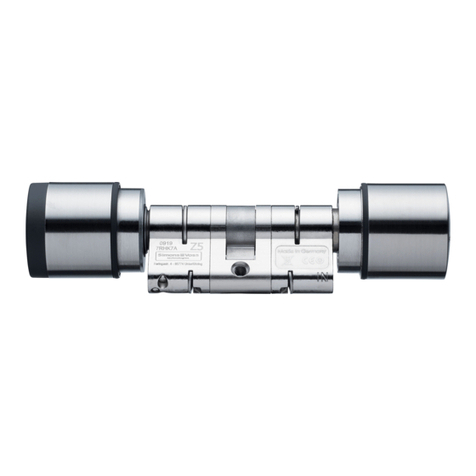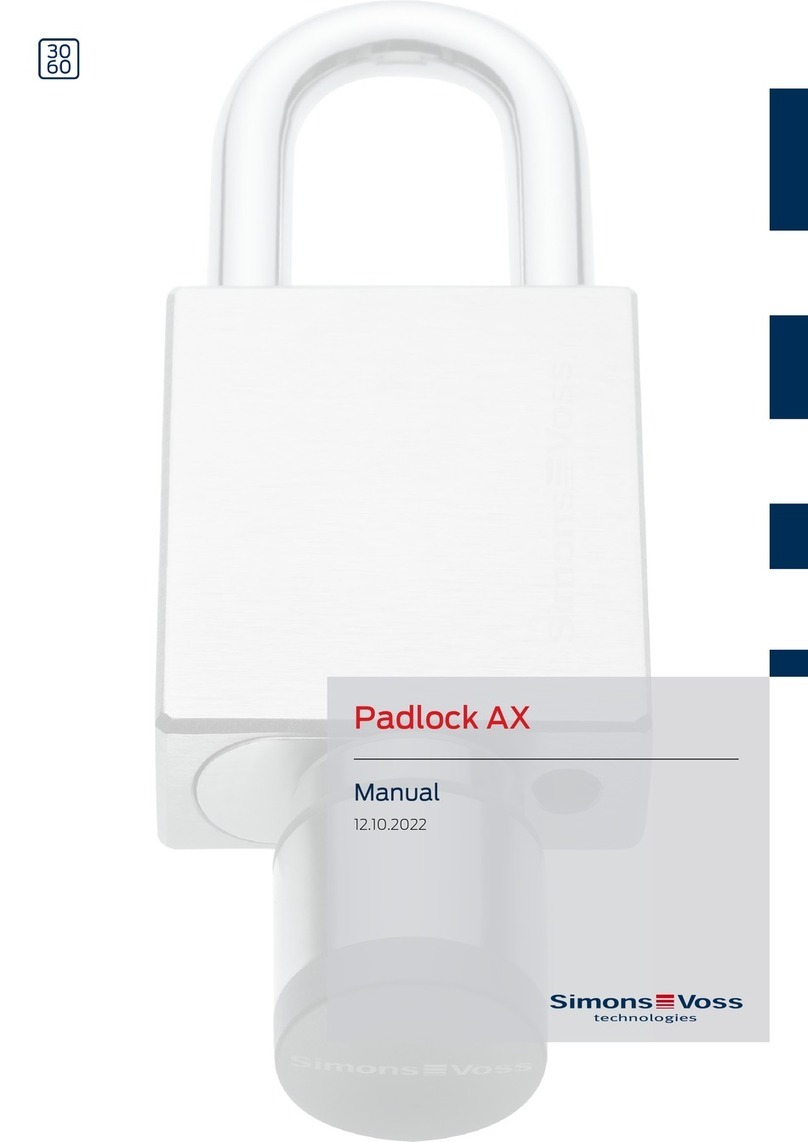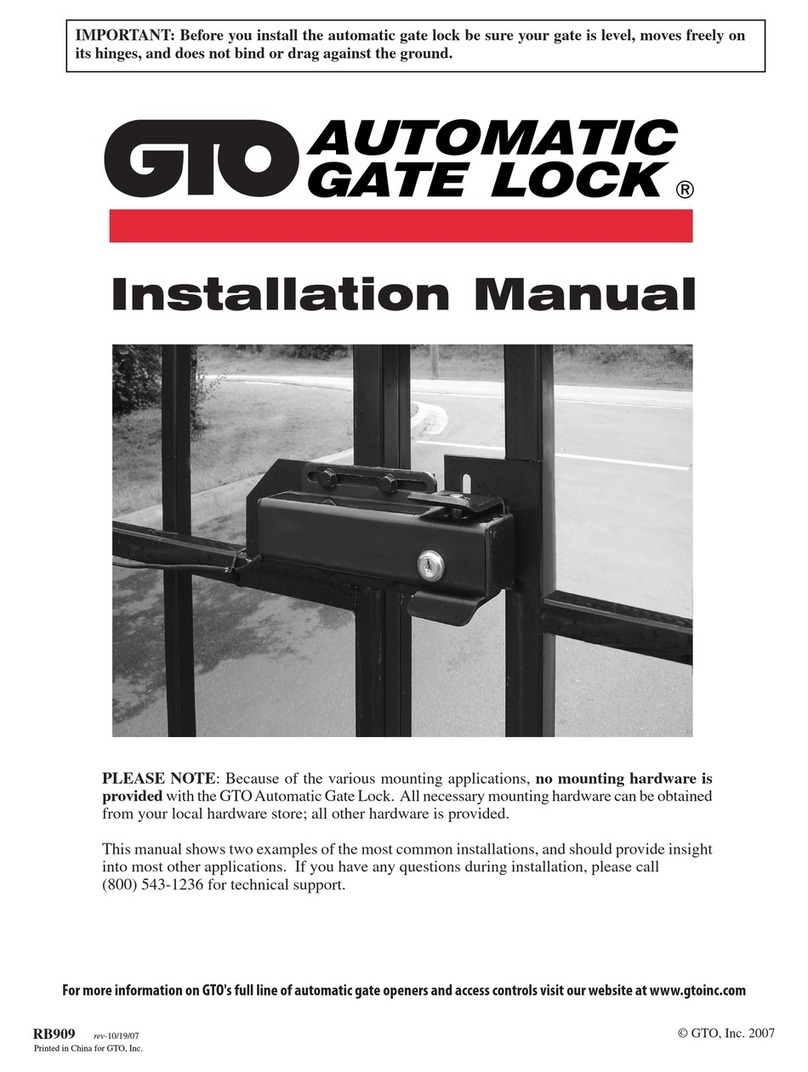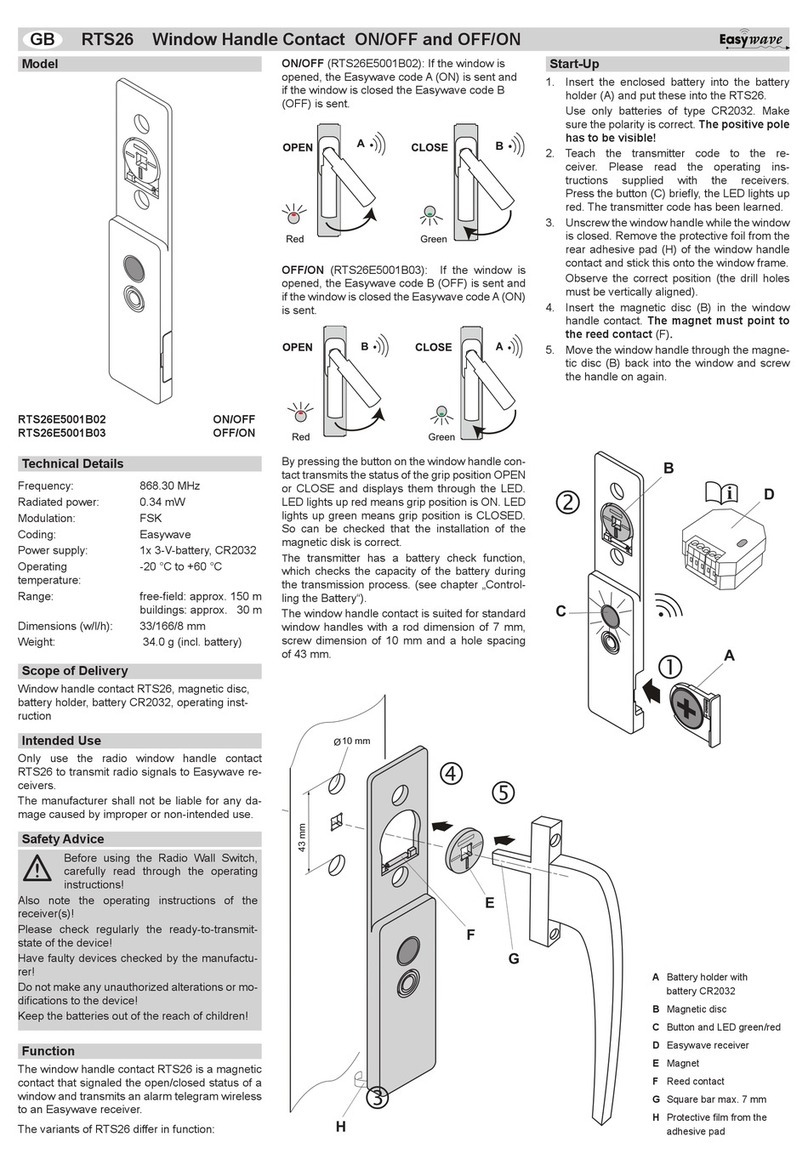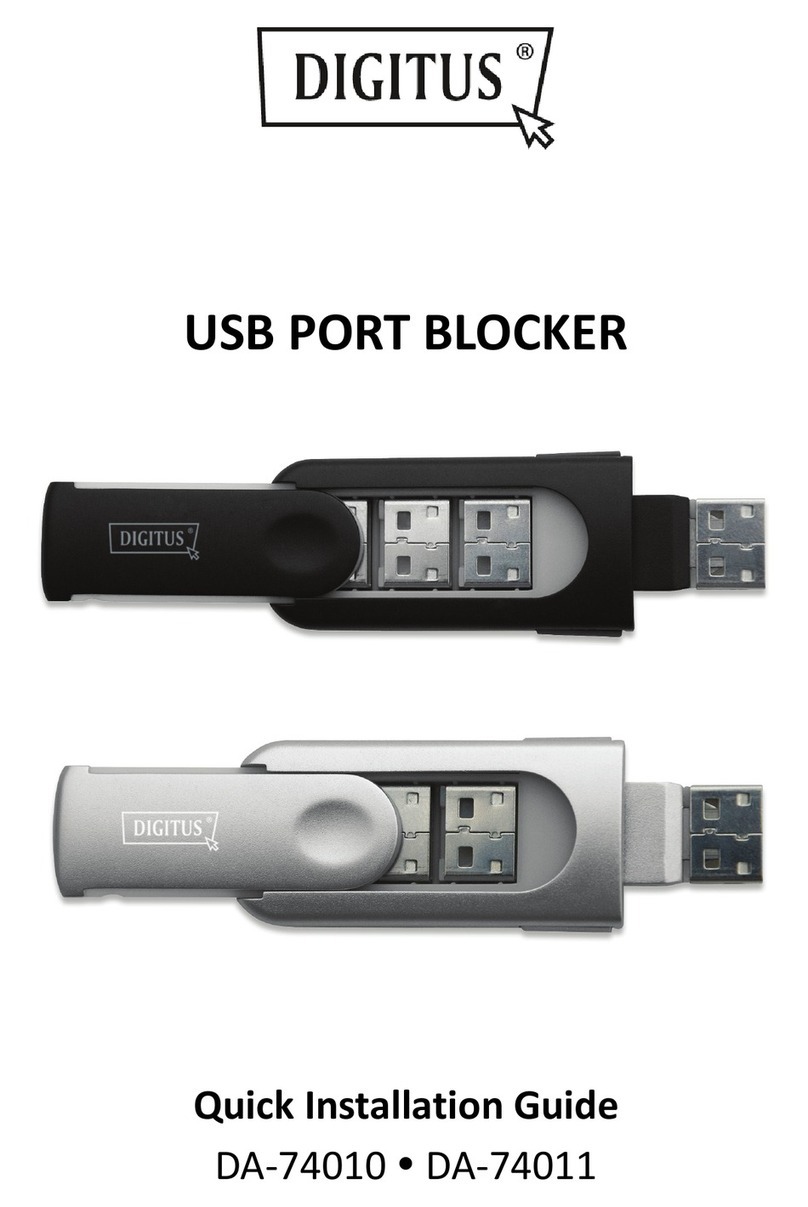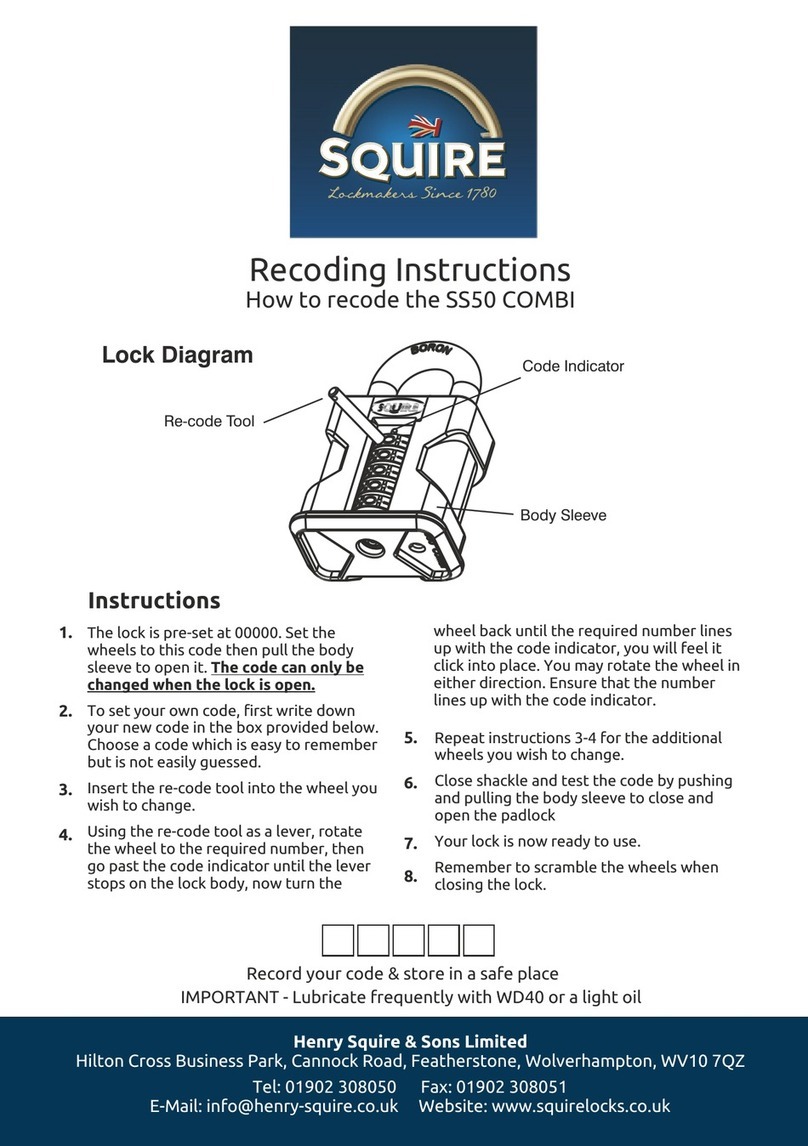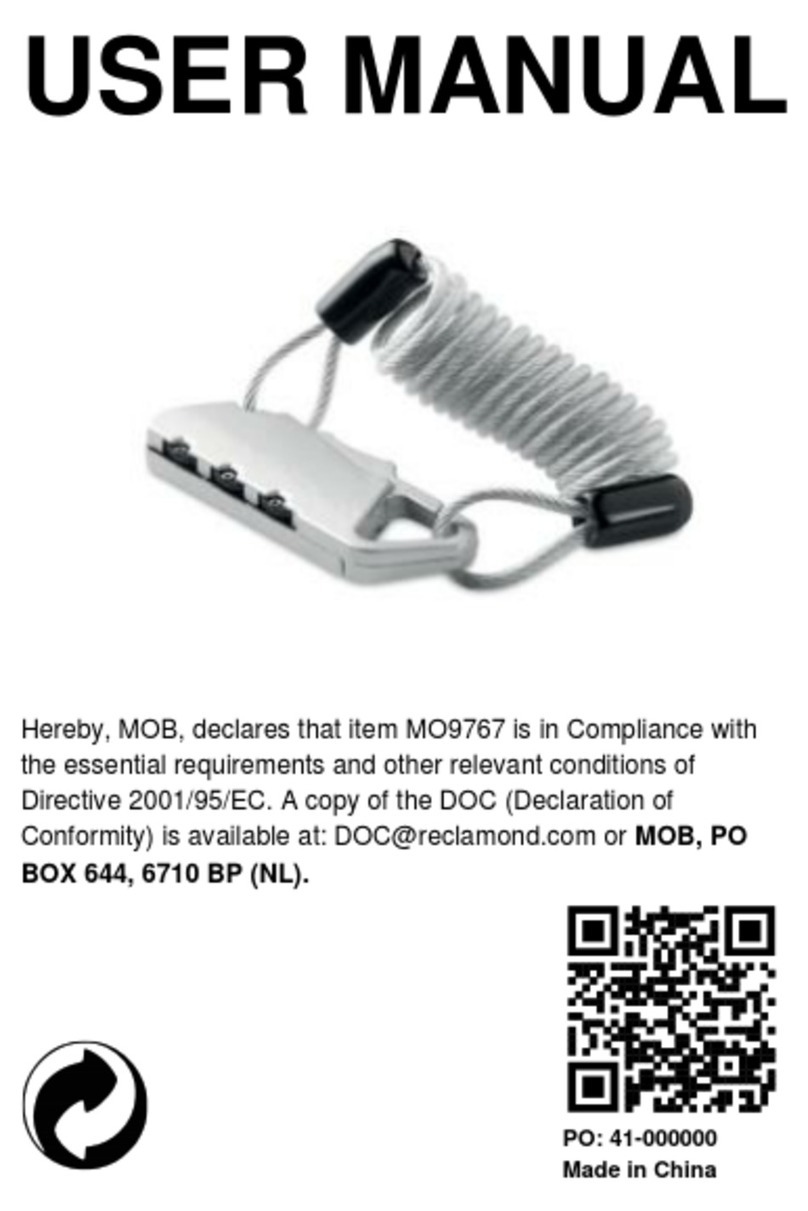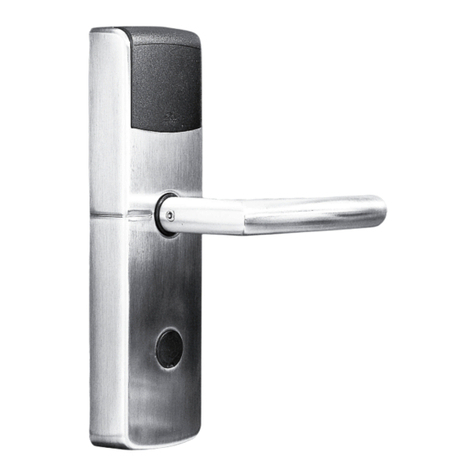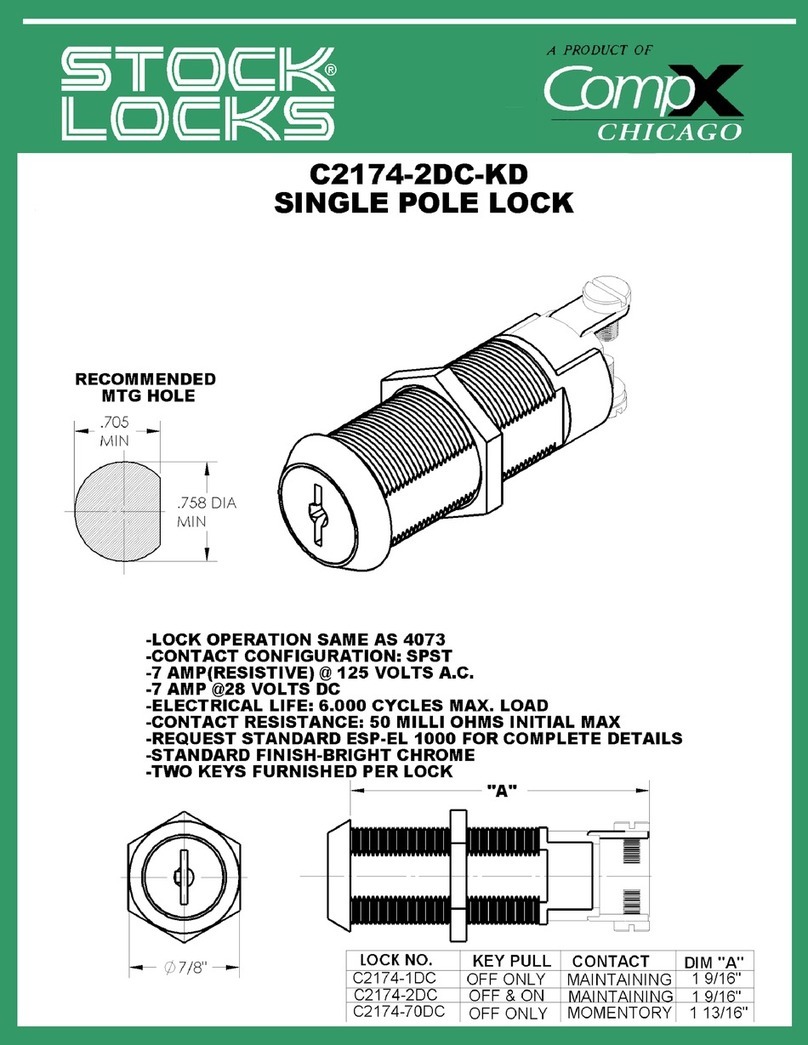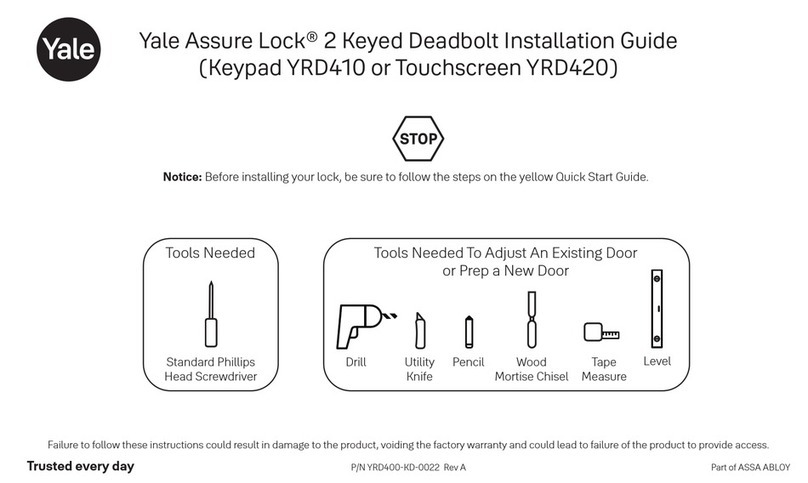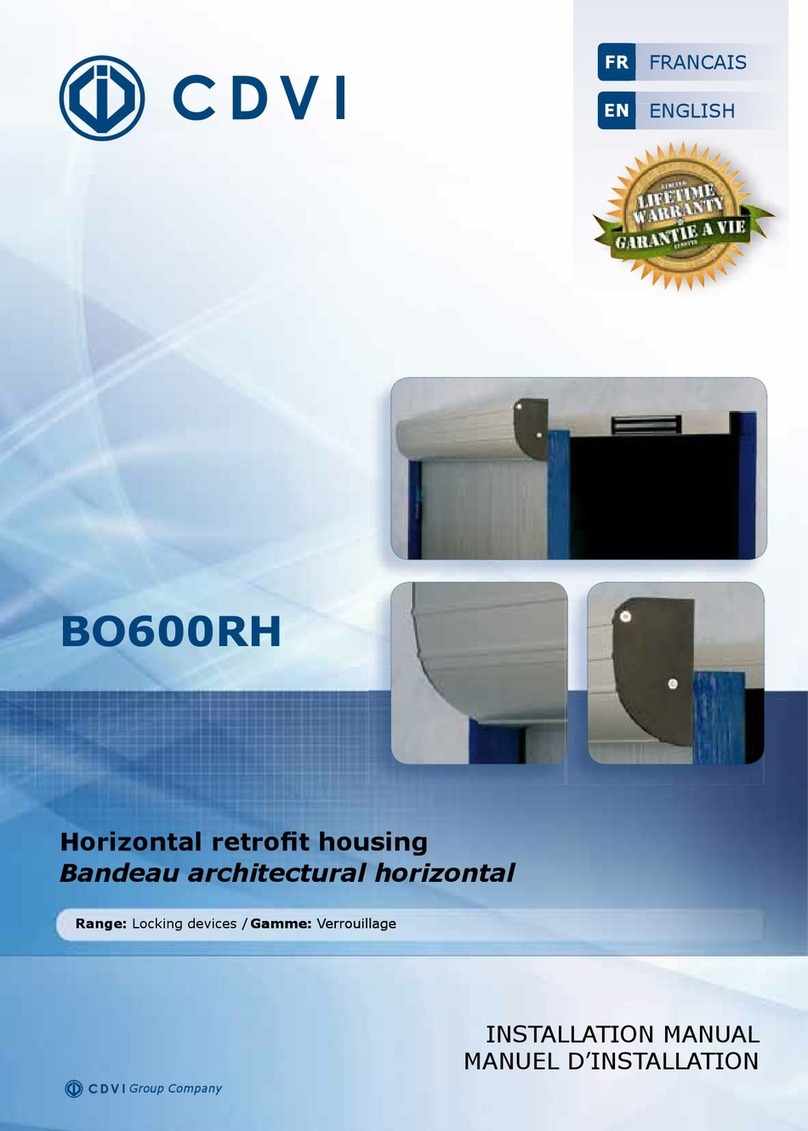Simons Voss SL User manual

Vorhangschloss (Z4.PL)
Juni 2015
DE | Kurzanleitung
EN | Instruction Leaflet
FR | Notice d'accompagnement
NL | Bijsluiter
ES | Folleto de instrucciones
IT | Foglio di istruzioni
Artikel-Nr.: ZS40.990527
RU | Инструкция листовка
SW | Snabbguide
DA | Brugsanvisning

Inhaltsverzeichnis
deutsch ................................................................. 3
english................................................................... 13
français ................................................................. 23
nederlands ........................................................... 34
español.................................................................. 44
dansk ..................................................................... 54
svensk ................................................................... 63
italiano................................................................... 72
русский................................................................. 82

PadLock_Kurzanleitung 3
Inhaltsverzeichnis
1 Allgemein ............................................................... 4
2 Sicherheitshinweise.............................................. 4
3 Bedienung SL-Ausführung................................... 6
4 Bedienung ML-Ausführung.................................. 6
5 Signaltöne.............................................................. 7
6 Batteriewechsel Aktiv-Version............................. 9
7 Batteriewechsel (Passiv) SC-Version................ 10

SimonsVoss Technologies GmbH
4 / 96 PadLock_Kurzanleitung
1 Allgemein
– Bei der Installation des digitalen Vorhangschlosses
ist darauf zu achten, dass sich keine Störquellen im
Umkreis befinden. (Aktiv-) Vorhangschlösser sollten
mindestens im Abstand von 0,5 m voneinander ent-
fernt montiert werden, (Aktiv-) Smart Relais bzw.
(Aktiv-) Scharfschalteinheiten im Abstand von 1,5 m.
– Bei der Montage auf keinen Fall gegen den Knauf
schlagen.
– Der Knauf ist durch einen Bajonettverschluss ver-
schlossen.
– Das Vorhangschloss wird fertig für den Einbau aus-
geliefert.
– Vorhangschlösser vor dem Einbau programmieren!
Die Vorhangsschlösser werden ab Werk im „Lager-
modus“ geliefert und können vor der Erstprogram-
mierung nicht mit einem Transponder betätigt wer-
den!
Hinweis: Die Batterien sind bei Lieferung bereits einge-
baut.
2 Sicherheitshinweise
Vorsicht:
– Durch fehlerhaft installierte oder programmierte Vor-
hangschlösser kann der Zugang durch eine Tür ver-
sperrt werden. Für die Folgen fehlerhafter Installatio-
nen, wie nicht möglicher Zugang zu verletzten Per-
sonen, Sachschäden oder andere Schäden haftet
die SimonsVoss Technologies GmbH nicht.
– Die im digitalen Vorhangschloss eingesetzten Batte-
rien können bei Fehlbehandlung eine Feuer- oder
Verbrennungsgefahr darstellen. Die Batterien nicht
aufladen, öffnen, erhitzen oder verbrennen! Batteri-
en nicht kurzschließen!
4

SimonsVoss Technologies GmbH
PadLock_Kurzanleitung 5 / 96
Hinweise:
– Für Beschädigungen der Türen oder der Komponen-
ten durch fehlerhafte Montage übernimmt die
SimonsVoss Technologies GmbH keine Haftung.
– Das SimonsVoss Vorhangschloss darf nur für den
vorgesehenen Zweck eingesetzt werden. Ein ande-
rer Gebrauch ist nicht zulässig.
– Der Einbau darf nur durch geschultes Fachpersonal
durchgeführt werden!
– Vorhangschlösser nicht mit Öl, Farbe oder Säuren in
Verbindung bringen!
– Im Außeneinsatz ist die Variante .WP einzusetzen.
– Änderungen bzw. technische Weiterentwicklungen
vorbehalten.
– Die Dokumentation wurde nach bestem Wissen er-
stellt, evtl. Fehler können aber nicht ausgeschlossen
werden. Hierfür kann keine Haftung übernommen
werden.
– Sollten Abweichungen von Inhalten in Fremdspra-
chenversionen der Dokumentation bestehen, gilt im
Zweifelsfalle das deutsche Original.
Hinweise zum Batteriewechsel
– Der Batteriewechsel darf nur durch geschultes Fach-
personal durchgeführt werden!
– Ein Vertauschen der Polarität kann zu Beschädigun-
gen des Vorhangschlosses führen!
– Es sind nur Batterien zu verwenden, welche von
SimonsVoss freigegeben sind!
– Das Vorhangschloss muss mit zwei Batterien betrie-
ben werden!
– Alte bzw. verbrauchte Batterien fachgerecht entsor-
gen, und nicht in Reichweite von Kindern aufbewah-
ren!
5

SimonsVoss Technologies GmbH
6 / 96 PadLock_Kurzanleitung
– Bei einem Batteriewechsel immer beide Batterien er-
neuern!
– Bei einem Batteriewechsel die Kontakte der neuen
Batterien nicht mit den Händen berühren. Verwen-
den Sie hierzu saubere und fettfreie Handschuhe.
– Beim Batteriewechsel darauf achten, dass die Elek-
tronik nicht z.B. mechanisch belastet wird bzw. an-
derweitig zu Schaden kommt.
– Zum Batteriewechsel ausschließlich den Montage-/
Batterieschlüssel (Z4.SCHLÜSSEL) von
SimonsVoss verwenden.
3 Bedienung SL-Ausführung
Öffnung
– Aktiv: Den Transponder in der Kommunikations-
reichweite des Knaufes betätigen oder
– (Passiv) SC: Die SmartCard/den SmartTag vor den
Leseknauf halten.
– Knauf ca. 30° im Uhrzeigersinn bis zum Anschlag
drehen (bis ein Widerstand spürbar ist) und den Bü-
gel öffnen.
Verschluss
– Bügel verschließen, dieser rastet automatisch ein.
– Unbedingt den korrekten Verschluss prüfen!
4 Bedienung ML-Ausführung
Öffnung
– Aktiv: Den Transponder in der Kommunikations-
reichweite des Knaufes betätigen oder
6

SimonsVoss Technologies GmbH
PadLock_Kurzanleitung 7 / 96
– (Passiv) SC: Die SmartCard/den SmartTag vor den
Leseknauf halten.
– Knauf ca. 30° im Uhrzeigersinn bis zum Anschlag
drehen (bis ein Widerstand spürbar ist) und den Bü-
gel öffnen.
Verschluss
– Bügel verschließen.
– Aktiv: Den Transponder in der Kommunikations-
reichweite des Knaufes betätigen oder
– (Passiv) SC: Die SmartCard vor den Leseknauf hal-
ten.
– Knauf ca. 30° gegen den Uhrzeigersinn bis zum An-
schlag drehen (bis ein Widerstand spürbar ist).
– Unbedingt den korrekten Verschluss prüfen!
5 Signaltöne
Aktiv-Version
– 2 kurze Töne vor dem Einkuppeln und ein kurzer
Ton nach dem Auskuppeln signalisieren normale
Betätigung.
– Batteriewarnstufe 1: 8 kurze Töne vor dem Einkup-
peln. Batterien sind bald leer. Batterien im Vorhang-
schloss wechseln.
– Batteriewarnstufe 2: 30 Sekunden lang 8 kurze Töne
mit jeweils einer Sekunde Pause. Signalisiert Not-
batteriewarnung: Batterien sind extrem entladen. So-
fort die Batterien im Vorhangschloss wechseln!
– 8 kurze Töne nach dem Auskuppeln signalisiert,
dass die Transponderbatterie leer ist. Transponder-
batterie wechseln lassen
7

SimonsVoss Technologies GmbH
8 / 96 PadLock_Kurzanleitung
(Passiv) SC-Version
– 2 kurze Töne + LED blinkt 2x kurz blau vor dem Ein-
kuppeln und ein kurzer Ton nach dem Auskuppeln:
signalisiert normale Betätigung.
– Batteriewarnstufe 1: 8 kurze Töne + LED blinkt 8x
kurz rot vor dem Einkuppeln. Batterien sind bald
leer. Batterien im Vorhangschloss wechseln.
– Batteriewarnstufe 2: 30 Sekunden lang 8 kurze Töne
+ LED blinkt jeweils 2x kurz rot mit jeweils einer Se-
kunde Pause. Signalisiert Notbatteriewarnung: Bat-
terien sind extrem entladen. Sofort die Batterien im
Vorhangschloss wechseln!
– 8 kurze Töne nach dem Auskuppeln signalisieren,
dass die Transponderbatterie leer ist. Transponder-
batterie wechseln lassen.
Nach erstmaligem Auftreten der Batteriewarnstufe 2 kön-
nen noch
– Aktiv-Vorhangschloss: ca. 50 Öffnungen durchge-
führt werden.
– (Passiv) SC-Vorhangschloss: ca. 200 Öffnungen
durchgeführt werden.
Nach Erreichen dieser Öffnungsanzahl bzw. nach ca. 4
Wochen (Aktiv) / ca. 2 Wochen (Passiv/SC) wechselt das
Vorhangschloss automatisch in den
– G1: Notbatterielagermodus
– G2: Freezemode
Ab dieser Warnstufe hat nur noch der Schließanlagenad-
ministrator die Möglichkeit, Zutritt zu erlangen. Nutzer-
Transponder werden nicht mehr angenommen (näheres
hierzu im Schließzylinder Handbuch unter "Batteriewar-
nungen").
8

SimonsVoss Technologies GmbH
PadLock_Kurzanleitung 9 / 96
6 Batteriewechsel Aktiv-Version
1. Den Batterie-/Montageschlüssel am Knauf so anset-
zen, dass die beiden Nasen in die Öffnungen der
Rastscheibe eingreifen. (Bei Bedarf Knauf drehen,
bis beide Nasen des Schlüssels in den Knauf einha-
ken.) Achtung: Damit der Batterie-/Montageschlüssel
in die Rastscheibe eingreifen kann, muss dieser plan
an der Innenstirnfläche des Griffmuldenrings anlie-
gen.
2. Knauf festhalten und Batterie-/Montageschlüssel
vorsichtig ca. um 30° im Uhrzeigersinn drehen (bis
Sie ein Knacken vernehmen).
3. Batterie-/Montageschlüssel vom Knauf entfernen.
4. Griffmuldenring nach hinten Richtung Vorhang-
schloss schieben, so dass er sich vom Knauf löst.
5. Griffmuldenring festhalten, Knauf ca. 10° gegen den
Uhrzeigersinn drehen und abziehen.
6. Beide Batterien vorsichtig aus der Halterung ziehen.
7. Die neuen Batterien mit den Pluspolen zueinander
gleichzeitig in die Halterung schieben (Batterien bitte
zügig wechseln). Die neuen Batterien nur mit saube-
ren und fettfreien Handschuhen berühren.
8. Knauf wieder aufstecken (entsprechend der dreiecki-
gen Markierungen, siehe Skizze) und im Uhrzeiger-
sinn drehend (ca. 10°) befestigen.
9. Griffmuldenring wieder auf den Knauf schieben, so
dass Knauf und Ring bündig abschließen.
10. Den Batterie-/Montageschlüssel am Knauf so anset-
zen, dass die beiden Nasen in die Öffnungen der
Rastscheibe eingreifen. (Bei Bedarf Knauf drehen
bis beide Nasen des Schlüssels in den Knauf einha-
ken.)
11. Knauf durch eine Drehung um ca. 30° gegen den
Uhrzeigersinn wieder verschließen (bis Sie ein
Knacken vernehmen). 9

SimonsVoss Technologies GmbH
10 / 96 PadLock_Kurzanleitung
Griffmuldenring
Innenknauf
Batterien
Markierungen
7 Batteriewechsel (Passiv) SC-Version
1. Den Batterie-/Montageschlüssel am Knauf so anset-
zen, dass die beiden Nasen in die Öffnungen der
Rastscheibe eingreifen. (Bei Bedarf Knauf drehen,
bis beide Nasen des Schlüssels in den Knauf einha-
ken.) Achtung: Damit der Batterie-/Montageschlüssel
in die Rastscheibe eingreifen kann, muss dieser plan
an der Innenstirnfläche des Griffmuldenrings anlie-
gen.
2. Knauf festhalten und Batterie-/Montageschlüssel
vorsichtig ca. um 30° im Uhrzeigersinn drehen (bis
Sie ein Knacken vernehmen).
3. Batterie-/Montageschlüssel vom Knauf entfernen.
4. Griffmuldenring nach hinten Richtung Vorhang-
schloss schieben, so dass er sich vom Knauf löst.
5. Griffmuldenring festhalten, und Knauf ca. 10° gegen
den Uhrzeigersinn drehen und abziehen.
6. Vorsichtig die Batteriehalterung zusammendrücken
(dort, wo die drei kleinen Pfeile zu erkennen sind),
damit sich die Antennenhalterung entrastet.
7. Die Antennenhalterung vorsichtig wegklappen (Sie-
he Abbildung), diese aber nicht mechanisch belas-
ten.
10

SimonsVoss Technologies GmbH
PadLock_Kurzanleitung 11 / 96
8. Optional: Falls eine Netzwerkplatine verbaut wurde,
diese vorsichtig aus der Halterung ziehen.
9. Die obere Batterie aus der Halterung ziehen.
10. Um die zweite Batterie entfernen zu können, den
Knauf um 180° drehen. Die Batterie fällt dann auto-
matisch aus der Halterung.
11. Die neuen Batterien mit den Pluspolen zueinander
gleichzeitig in die Halterung schieben (Batterien bitte
zügig wechseln). Die neuen Batterien nur mit saube-
ren und fettfreien Handschuhen berühren.
12. Die Antennenhalterung wieder verrasten. Hierbei
darauf achten, dass beide Seiten fest eingerastet
sind.
13. Knaufkappe wieder aufstecken (entsprechend den
drei dreieckigen Markierungen, siehe Skizze) und im
Uhrzeigersinn drehend (ca. 10°) befestigen (siehe
Abbildung).
14. Griffmuldenring wieder auf den Knauf schieben, so
dass Knauf und Ring bündig abschließen.
15. Den Batterie-/Montageschlüssel am Knauf so anset-
zen, dass die beiden Nasen in die Öffnungen der
Rastscheibe eingreifen (bei Bedarf Knauf drehen bis
beide Nasen des Schlüssels in den Knauf einhaken).
16. Knauf durch eine Drehung um ca. 30° gegen den
Uhrzeigersinn wieder verschließen (bis Sie ein
Knacken vernehmen).
11

SimonsVoss Technologies GmbH
12 / 96 PadLock_Kurzanleitung
Batteriehalterung
Antennenhalterung
12

PadLock_Kurzanleitung 13
Inhaltsverzeichnis
1 General information ............................................ 14
2 Safety instructions.............................................. 14
3 Operating the SL version.................................... 16
4 Operating the ML version................................... 16
5 Audible signals.................................................... 17
6 Battery warnings for active version .................. 18
7 Battery replacement (Passive) SC version ....... 20

SimonsVoss Technologies GmbH
14 / 96 PadLock_Kurzanleitung
1 General information
– When installing the digital padlock, ensure that there
are no sources of interference in the surrounding
area. (Active) padlocks should be installed at least
0.5 m from one another while (active) SmartRelays
or (active) activation units should be 1.5 m from one
another.
– You must not strike the knob during installation.
– The knob is locked into place with a bayonet mount.
– The padlock is supplied ready for installation.
– Programme padlocks before installing. Padlocks are
supplied from the factory in ‘storage mode’ and can-
not be activated with a transponder before initial pro-
gramming.
Important: Batteries are already installed before delivery.
2 Safety instructions
Warning:
– Access through a door may be blocked due to incor-
rectly installed or incorrectly programmed padlocks.
SimonsVoss GmbH is not liable for consequences of
incorrect installation, such as blocked access to in-
jured persons, physical damage or any other losses.
– The batteries used in the digital padlock may pose a
fire or burn hazard if handled incorrectly. Do not re-
charge, open, heat or burn these batteries. Do not
short-circuit batteries.
Note:
– SimonsVoss Technologies GmbH accepts no liability
for damage caused to doors or components due to
incorrect fitting or installation.
14

SimonsVoss Technologies GmbH
PadLock_Kurzanleitung 15 / 96
– The SimonsVoss padlock may only be used for its
intended purpose. No other use is permitted.
– Only trained specialists may install the cylinder.
– Do not allow the padlock to come into contact with
oil, paint or acids.
– Use the .WP version when installing outdoors.
– We reserve the right to make modifications or further
technical developments.
– This documentation has been compiled in accord-
ance with the best knowledge available to us. How-
ever, errors cannot be ruled out. No liability is accep-
ted in such cases.
– Should there be differences in the content of other
language versions of this documentation, the Ger-
man version applies in cases of doubt.
Instructions on battery replacement
– Only trained specialists may replace the battery.
– Damage may be caused to the padlock if you re-
verse the polarity.
– Only use batteries which have been approved by Si-
monsVoss!
– The padlock must always be operated with two bat-
teries.
– Dispose of old and used batteries in the proper man-
ner and store them out of children's reach.
– Always replace both batteries when changing batter-
ies.
– Do not touch the contacts on the new batteries with
your hands when replacing the old ones. Use clean
gloves free of fat or grease to handle the battery.
– When replacing the batteries, make sure that the
electronics are not subject to mechanical load and
are not damaged in any other way.
15

SimonsVoss Technologies GmbH
16 / 96 PadLock_Kurzanleitung
– Only use the SimonsVoss installation/battery key
(Z4.KEY) to replace the battery.
3 Operating the SL version
Opening
– Active: Activate the transponder within the thumb-
turn’s communication range or
– (Passive) SC: Hold the SmartCard/SmartTag in front
of the reader thumb-turn.
– You can open the padlock by turning the thumb-turn
in a clockwise direction until it will go no further and
the shackle opens.
Locking
– Close shackle; the shackle always locks into place
automatically.
– Always check that it has locked properly.
4 Operating the ML version
Opening
– Active: Activate the transponder within the thumb-
turn’s communication range or
– (Passive) SC: Hold the SmartCard/SmartTag in front
of the reader thumb-turn.
– You can open the padlock by turning the thumb-turn
in a clockwise direction until it will go no further and
the shackle opens.
Locking
– Close shackle.
16

SimonsVoss Technologies GmbH
PadLock_Kurzanleitung 17 / 96
– Active: Activate the transponder within the thumb-
turn’s communication range or
– (Passive) SC: Hold the SmartCard in front of the
reader thumb-turn.
– You can open the padlock by turning the thumb-turn
about 30° in an anti-clockwise direction until it will go
no further.
– Always check that it has locked properly.
5 Audible signals
Active version
– 2 short audible signals before engaging and a short
signal after disengaging indicate normal operation.
– Battery Warning Level 1: 8 short audible signals be-
fore engaging. Batteries will soon be empty. Replace
batteries in the padlock.
– Battery Warning Level 2: 8 short audible signals for
30 seconds with a one-second break between each
signal. Indicates emergency battery warning: Batter-
ies are almost completely empty. Replace batteries
in the padlock immediately.
– 8 short audible signals after disengaging indicate
that the transponder battery is empty. Have
transponder battery replaced
(Passive) SC version
– 2 short audible signals + LED flashes blue twice
briefly before engaging and a short audible signal
after disengaging: indicates normal activation.
– Battery Warning Level 1: 8 short audible signals +
LED flashing red briefly 8x before engaging. Batter-
ies will soon be empty. Replace batteries in the pad-
lock.
17

SimonsVoss Technologies GmbH
18 / 96 PadLock_Kurzanleitung
– Battery Warning Level 2: 8 short audible signals for
30 seconds + LED flashes red briefly twice with a
one-second break between each signal. Indicates
emergency battery warning: Batteries are almost
completely empty. Replace batteries in the padlock
immediately.
– 8 short audible signals after disengaging indicate
that the transponder battery is empty. Have
transponder battery replaced.
After Battery Warning Level 2 is emitted for the first time,
it is still possible
– Active padlock: about 50 opening transactions are
carried out.
– (Passive) padlock: about 200 opening transactions
are carried out.
After reaching this number of opening transactions or
after about 4 weeks (active) / about 2 weeks (passive/
SC), the padlock automatically switches to
– G1: emergency battery storage mode
– G2: freeze mode
Once this warning level is reached, only the locking sys-
tem administrator is able to gain access. User transpon-
ders are no longer accepted (consult 'Battery warnings' in
the locking cylinder manual for more detailed information).
6 Battery warnings for active version
1. Place the installation/battery key on the knob in such
a way that its two teeth lock into the openings in the
locking disc; If necessary, turn the knob until both
teeth engage into the knob. Important: the battery/in-
stallation key must be placed flat on the inside front
surface of the recessed grip ring to ensure that the
installation tool can engage into the locking disc.
2. Hold the knob firmly and carefully turn the battery/in-
stallation key about 30° in a clockwise direction (until
you hear a click).
18

SimonsVoss Technologies GmbH
PadLock_Kurzanleitung 19 / 96
3. Remove battery/installation key from the knob.
4. Push recessed grip ring backwards towards the pad-
lock, so that it comes away from the thumb-turn.
5. Hold recessed grip ring, turn knob about 10° in an
anti-clockwise direction and remove.
6. Carefully remove both batteries from the holder.
7. Insert the new batteries into the holder at the same
time with the positive poles next to each other;
change the batteries as quickly as possible. Use
clean gloves free of fat or grease to handle new bat-
teries.
8. Replace the knob (align the triangle marks as in the
diagram) and turn about 10° in a clockwise direction.
9. Push recessed grip ring back onto the knob, so that
the knob and ring close together in a flush fit.
10. Place the installation/battery key on the knob in such
a way that its two teeth lock into the openings in the
locking disc; If necessary, turn the knob until both
teeth engage into the knob.
11. Lock the knob into place again by turning it about
30° in an anti-clockwise direction (until you hear a
click).
Recessed grip ring
Inside Knob
Batteries
Markings
19

SimonsVoss Technologies GmbH
20 / 96 PadLock_Kurzanleitung
7 Battery replacement (Passive) SC
version
1. Place the installation/battery key on the knob in such
a way that its two teeth lock into the openings in the
locking disc; If necessary, turn the knob until both
teeth engage into the knob. Important: the battery/in-
stallation key must be placed flat on the inside front
surface of the recessed grip ring to ensure that the
installation tool can engage into the locking disc.
2. Hold the knob firmly and carefully turn the battery/in-
stallation key about 30° in a clockwise direction (until
you hear a click).
3. Remove battery/installation key from the knob.
4. Push recessed grip ring backwards towards the pad-
lock, so that it comes away from the thumb-turn.
5. Hold recessed grip ring firmly and turn knob about
10° in an anti-clockwise direction and remove.
6. Carefully press the battery holder together where
you see three small arrows, so that the antenna
bracket disengages.
7. Carefully fold the antenna bracket out (see diagram);
do not apply any mechanical load to it.
8. Optional: If a network card has been fitted, carefully
remove it from the holder.
9. Remove the top battery from the holder.
10. Turn the knob 180°, so that you can remove the
second battery. The battery will then automatically
drop from the holder.
11. Insert the new batteries into the holder at the same
time with the positive poles next to each other;
change the batteries as quickly as possible. Use
clean gloves free of fat or grease to handle new bat-
teries.
20
This manual suits for next models
2
Table of contents
Languages:
Other Simons Voss Lock manuals
